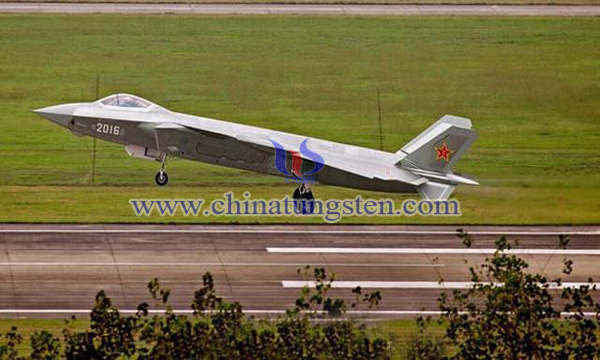Tungsten Oxide Quantum Dots and Tungsten Oxide Nanowires Absorbing Materials
- Details
- Category: Tungsten Information
- Published on Tuesday, 31 July 2018 23:04
Tungsten oxide has the unique physical properties such as photochromism, electrochromism, thermochromism and gas sensitivity. The color changes can be achieved by changing the wavelength, changing the temperature or applying voltage. Therefore, the transition metal tungsten oxide can be used in many fields, such as various sensors, electronic devices, and so on, because of its advantages. The development of Vietnam has become a hot topic all over the world.

Some scholars have designed a method for the simultaneous preparation of tungsten oxide quantum dots and tungsten oxide nanowires. By using one step hydrothermal method, tungsten oxide quantum dots and nanowires are synthesized by six tungsten chloride precursor. The tungsten oxide nanowires are synthesized by hydrothermal action, and then tungsten oxide quantum dots are formed by the method of hydrothermal cutting, which can stabilize the tungsten oxide quantum dots. Tungsten oxide quantum dots (QDs) and tungsten oxide nanowires are prepared at the same time, reliably and efficiently. The tungsten oxide quantum dots prepared can be used in conventional applications of quantum dots such as fluorescence imaging, iron ion specific detection and so on. The prepared tungsten oxide nanoparticles can be used as a very good absorbing material.
To achieve the above purposes, the concurrent preparation process of tungsten oxide quantum dots and tungsten oxide nanowires includes the following steps:
(1)The tungsten hexachloride solution of 0.0667 g was dissolved in 12 ml of absolute ethanol and stirred to obtain a golden clarified tungsten hexachloride ethanol solution.
(2)The solution prepared by step (1) was transferred into a polytetrafluoroethylene seal tank and placed in a hydrothermal reactor, and the hydrothermal solution was prepared at the temperature range of 120~220 C for 4-10 hours. The solution included tungsten oxide quantum dots, tungsten oxide nanowires, ethanol reactants and water in the solution.
(3)The polytetrafluoroethylene tank in a hydrothermal reactor is removed after the solution of the water heat is reduced to room temperature, and the solution of the polytetrafluoroethylene tank is removed and placed in a centrifuge tube. The centrifuge tube is placed in a centrifuge, and the centrifuge is centrifuged for more than 10 minutes at a speed of more than 10000 rpm. The centrifuge solution is obtained. The upper layer of the retrocentric solution is supernatant. The supernatant consists of tungsten oxide quantum dots and ethanol reactants. The lower layer is precipitation, and the precipitation is tungsten oxide nanowires.
(4)The supernatant of the centrifuge solution obtained from the step (3) has been dialysate for 24 hours after dialysis in a dialysis bag with molecular weight of 500, and the pure tungsten oxide quantum dots solution is obtained by dialysis removal of ether, ethanol and hydrogen chloride.
(5)Take the precipitate in step (3) and wash it with deionized water for 6 times, wash away the impurity on the surface, and make the precipitate below -20 C for more than 20 hours after freezing and drying for more than 20 hours.
The researchers tested the electromagnetic wave absorption properties of tungsten oxide nanowires. When the thickness of the tungsten oxide nanowire absorption layer is 1.5 millimeters, the optimum absorption performance is obtained at 16.7GHz and the maximum reflection loss reaches -40.5dB. It shows that the prepared tungsten oxide nanowires are very good absorbing materials and can be applied to electromagnetic shielding technology. Field and combat stealth technology field, to improve the compatibility of electromagnetic equipment, to strengthen the protection of information technology, to better protect the health of the personnel operating electromagnetic radiation equipment.
- Tungsten Oxide Manufacturer & Supplier, Chinatungsten Online: www.tungsten-oxide.com
- Tungsten News & Prices of China Tungsten Industry Association: www.ctia.com.cn
- Molybdenum News & Price: news.molybdenum.com.cn
- Tel.: 86 592 5129696; Fax: 86 592 5129797; Email: sales@chinatungsten.com



 sales@chinatungsten.com
sales@chinatungsten.com